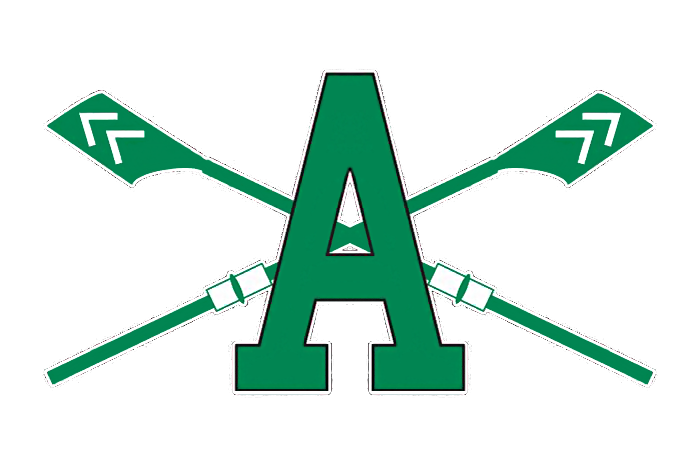Weight
- L, LWT or Lt: Lightweight rowing
- If not present the crew is open weight
Age
- Y: Youth (Under 16 years of age)
- J: Junior (Under 19 years of age)
- B: Senior B (Under 23 years of age)
- There are no age restrictions for coxswains and their age is not factored into the average age of the crew.
Gender
- M: Men's
- W: Women's
- Mixed: Equal numbers of either gender (excluding coxswain)
Crew Size
- 1, 2, 4, 8: The number of rowers in the crew. It is common to use Roman numerals, especially when referring to a VIII.
Discipline
- x: Sculling boat
- If not present then the boat is sweep-oar
Coxswain
- +: Coxed (with coxswain)
- -: Coxless (without coxswain)
- If not present then the boat is coxless, except for an eight.
Examples
- M8+ = Men's eight
- W4- = Women's coxless four (or "straight four")
- LM2- = Lightweight men's coxless pair
- BM1x = Men's single sculls under age 23
- JW4x = Junior women's quad
- Masters WC2x = Masters women's double sculls with average crew age between 43-49
- Mixed Masters 8+ = Eight with 4 women and 4 men as rowers and a coxswain of either gender
The athletes
Ambidextrous
A rower who can row both on the starboard and port sides of the boat.
The rower closest to the front or bow of a multi-person shell. In coxless boats, often the person who keeps an eye on the water behind him to avoid accidents.
Coxswain or "cox"
The oar-less crew-member, usually included, who is responsible for steering and race strategy. The coxswain sits in the stern of the boat, and faces in the direction of travel.
Engine room
The middle rowers in the boat. In an 8-person shell, these are generally seats 6, 5, 4 and 3. They are generally the biggest and strongest rowers, who provide most of the power to the boat.
Heavyweight
A rower who weighs more than the limit for lightweight rowing. Often referred to as Open weight.
A rower whose weight allows him or her to be eligible to compete in lightweight rowing events.
Novices
Rowers who are rowing for their first year.
A sweep rower who rows with the oar on the port or left side of the boat. This means that the oar blade is placed to the rower's right side.
Power House
The middle rowers in the boat. In an 8-person shell, these are generally seats 6, 5, 4 and 3. They are generally the biggest and strongest rowers, who provide most of the power to the boat. (see Engine room)
A rower who rows with two oars, one in each hand.
A rower's position in the boat counting up from the bow. In an eight, the person closest to the bow of the boat is 1 or "bow," the next is 2, followed by 3, 4, 5, 6, 7 and finally 8 or "stroke." In certain countries the seats are numbered the opposite way, from stroke up to bow.
A sweep rower who rows with the oar on the starboard or right side of the boat. This means that the oar blade is placed to the rower's left side.
The rower closest to the stern of the boat, responsible for the stroke rate and rhythm.
A style of rowing in which each rower uses one oar.
Wash
The wake from a motorized boat, disliked by rowers as the wash affects the boat stability and can cause water to flood over the gunwales.
The boats
Often called "shells"
SweeP
In a sweep boat, each rower has one oar.
Eight (8+)
A shell with 8 rowers. Along with the single scull, it is traditionally considered to be the blue ribbon event. Always with coxswain because of the size, weight and speed of the boat - bow loader eights exist but are banned from most competitions for safety reasons.
Four (4-) or (4+)
A shell with 4 rowers. Coxless fours (4-) are often referred to as straight fours, and are commonly used by lightweight and elite crews and are raced at the Olympics. In club and school rowing, one more frequently sees a coxed four (4+) which is easier to row, and has a coxswain to steer.
Pair (2-) or (2+)
A shell with 2 rowers. The Coxless pair (2-), often called a straight pair, is a demanding but satisfying boat to master. Coxed pairs (2+) are rarely rowed by most club and school programs. It is no longer an Olympic class event, but it continues to be rowed at the World Rowing Championships.
ScullinG
In a sculling boat, each rower has two oars or 'sculls', one on each side of the boat.
Octuple (8x)
A shell having 8 rowers with two oars each. Generally a training boat, but raced by juniors in the UK.
Quad (4x)
A shell having 4 rowers with two oars each. Can be coxed (4x+) but is usually coxless (4x-).
Triple (3x)
A shell for three scullers with two oars each, usually without a coxswain. These boats are considerably rare.
Double (2x)
A shell for two scullers generally without a coxswain.
Single (1x)
A shell designed for an individual sculler. Very good for skill development, particularly beginners, and a very competitive class at world events. Extremely rare is the coxed single which is only used as a training boat or for adaptive rowing.
Open water boaT
A shell with positive flotation, self-bailing capacity, a non-binding stretcher, and no forestay so re-entry is easier. These boats are generally shorter and wider at the waterline than boats designed for flat water racing.

